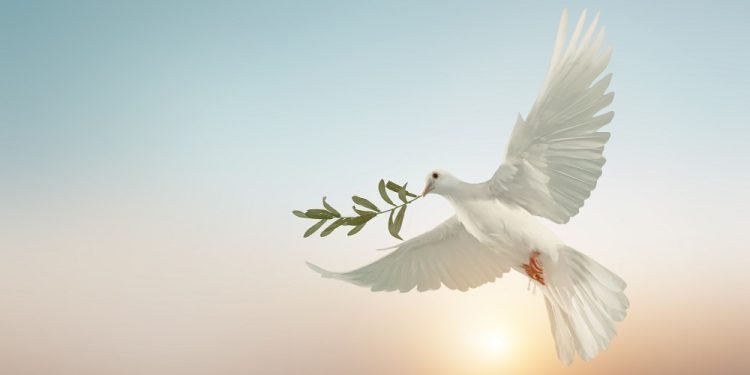
International Day of Peace
The International Day of Peace is a holiday that has been in existence for over 40 years and is a shared date for humans all over the world to commit to the process of peace and to settle their differences—if only for a day. It’s a holiday that attempts to sow the seeds of peace so that one day we can all benefit from a culture of peace.
Unfortunately, at the time we wrote this holiday article, there were over 25 ongoing conflicts around the world. It seems like war is deeply ingrained in our nature and has existed as long as humans have.
However, that doesn’t mean that we can’t strive towards peace, and perhaps one day we will achieve it. All lofty goals for this holiday—a day that’s observed annually on September 21st.
The History of The International Day of Peace
This holiday was originally established in 1981 through a unanimous UN resolution. It’s a holiday that has been observed every year since and has been bolstered by the passage of UN Resolution A/RES/53/243 B in 1999. This resolution established a “culture of peace.” All this means is that it was a declaration and program of action that worked towards a culture of peace.
Important Facts About Peace
We can’t just gloss over the subject of world peace and then go on our merry way. We have to take a few moments out of our celebration of the International Day of Peace and share some of the things that we have learned about peace over the years.
We hope that the following bullet points give you a better idea of world peace, or the lack thereof, so that you can join the effort to work towards making this planet a better place for everyone:
- Although war is as old as humanity itself, periods of peace have been common throughout history as well.
- A recent study has shown that approximately 10% of civilizations have never experienced war.
- The same study showed that approximately half of the civilizations only experienced war once a generation.
- The United States has been engaged in war more than 92% of the time that it has been in existence.
- During the 21st century, there have been more regions at peace longer than has been the case for generations.
- People have been searching for peace since the dawn of time. The first human story, the Epic of Gilgamesh (written in 2000 BCE), details Gilgamesh’s search for peace.
- In 1945, aggressive war was prohibited by international law. Unfortunately, it still happens.
- Global spending on arms exceeds $2 trillion, but only $50 billion is spent on the UN peacekeeping system.
Observing The International Day of Peace
This is a holiday that everyone should observe. Obviously, it’s a day that should be observed by governments, non-governmental organizations, and organizations working toward peace. It can also be observed by the average citizen.
People can take the time to learn more about what they can do to work towards peace and lobby their government officials to work constructively with other nations. Peace lovers around the world can also spread the word about this holiday by using the hashtag #InternationalDayOfPeace on social media.
Every year, there are themes that help to galvanize peace efforts around a central goal. This practice of adding a theme to this holiday is rather recent, however. It only began in 2007. With that said, below are some of the past themes that have been observed on this holiday.
Past International Day of Peace Themes:
- 2007: Peace is the United Nations’ Highest Calling.
- 2009: Disarmament and Non-Proliferation.
- 2014: The Right of Peoples to Peace.
- 2016: The Sustainable Development Goals: Building Blocks for Peace.
- 2018: The Right to Peace: The Universal Declaration of Human Rights at 70.
- 2022: End Racism. Build Peace.
As can be seen from the above list of International Day of Peace themes, there are many different avenues that people can take as they work toward world peace. We hope that people find the way that suits them best to not only observe this holiday but to guide their communities to a greater level of peace than they would have enjoyed in the past.








